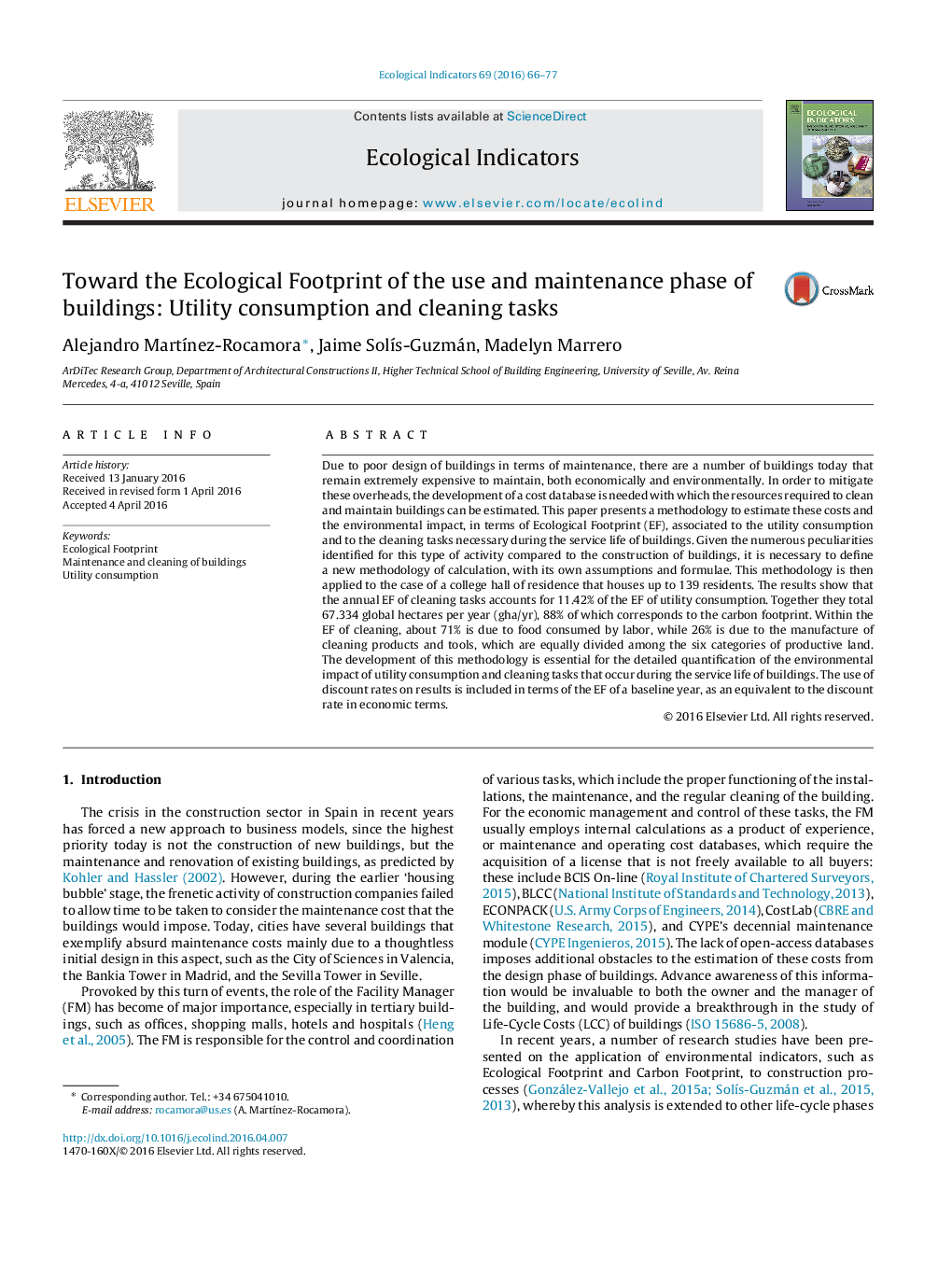| Article ID | Journal | Published Year | Pages | File Type |
|---|---|---|---|---|
| 6293193 | Ecological Indicators | 2016 | 12 Pages |
Abstract
Due to poor design of buildings in terms of maintenance, there are a number of buildings today that remain extremely expensive to maintain, both economically and environmentally. In order to mitigate these overheads, the development of a cost database is needed with which the resources required to clean and maintain buildings can be estimated. This paper presents a methodology to estimate these costs and the environmental impact, in terms of Ecological Footprint (EF), associated to the utility consumption and to the cleaning tasks necessary during the service life of buildings. Given the numerous peculiarities identified for this type of activity compared to the construction of buildings, it is necessary to define a new methodology of calculation, with its own assumptions and formulae. This methodology is then applied to the case of a college hall of residence that houses up to 139 residents. The results show that the annual EF of cleaning tasks accounts for 11.42% of the EF of utility consumption. Together they total 67.334 global hectares per year (gha/yr), 88% of which corresponds to the carbon footprint. Within the EF of cleaning, about 71% is due to food consumed by labor, while 26% is due to the manufacture of cleaning products and tools, which are equally divided among the six categories of productive land. The development of this methodology is essential for the detailed quantification of the environmental impact of utility consumption and cleaning tasks that occur during the service life of buildings. The use of discount rates on results is included in terms of the EF of a baseline year, as an equivalent to the discount rate in economic terms.
Keywords
Related Topics
Life Sciences
Agricultural and Biological Sciences
Ecology, Evolution, Behavior and Systematics
Authors
Alejandro MartÃnez-Rocamora, Jaime SolÃs-Guzmán, Madelyn Marrero,
